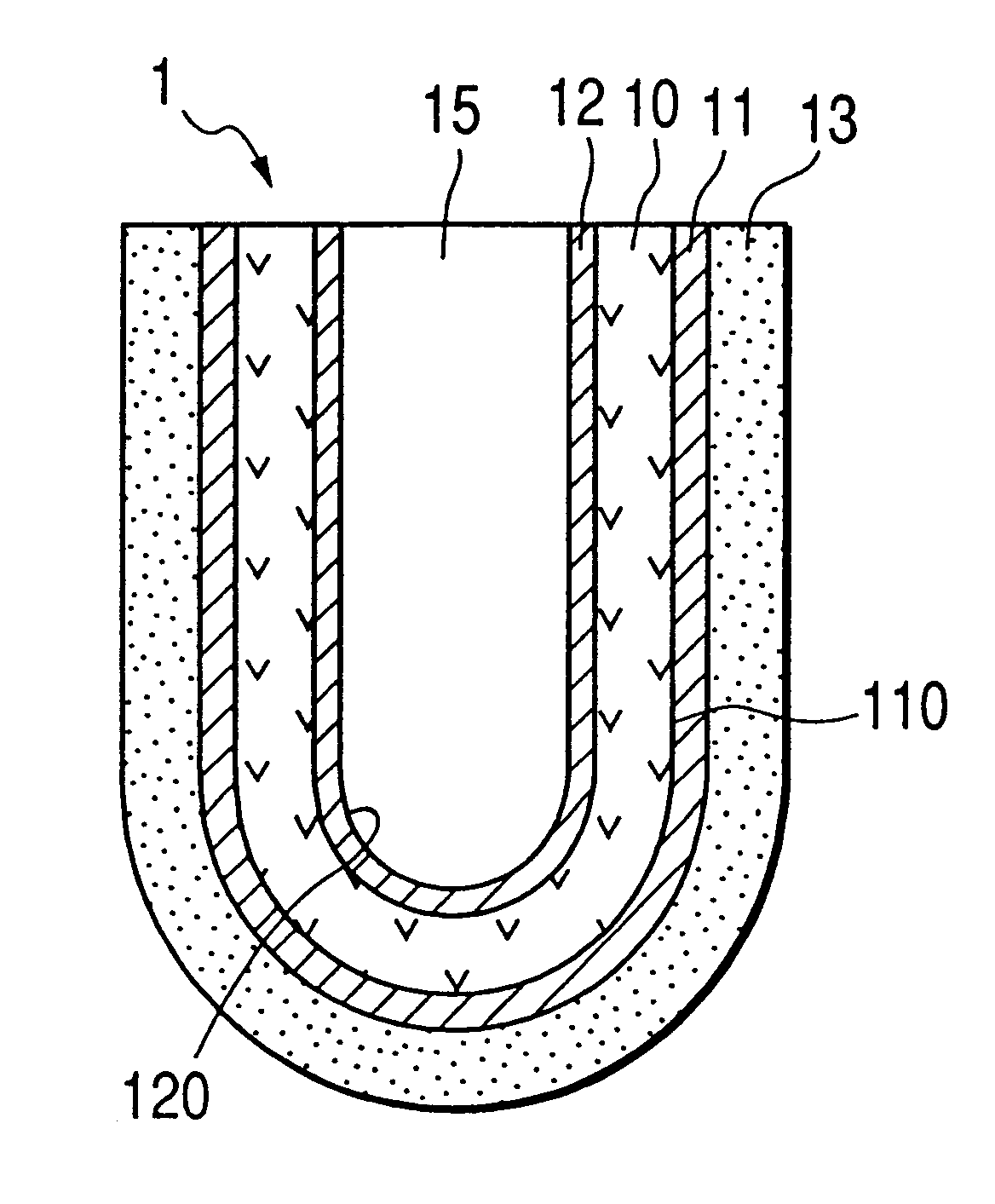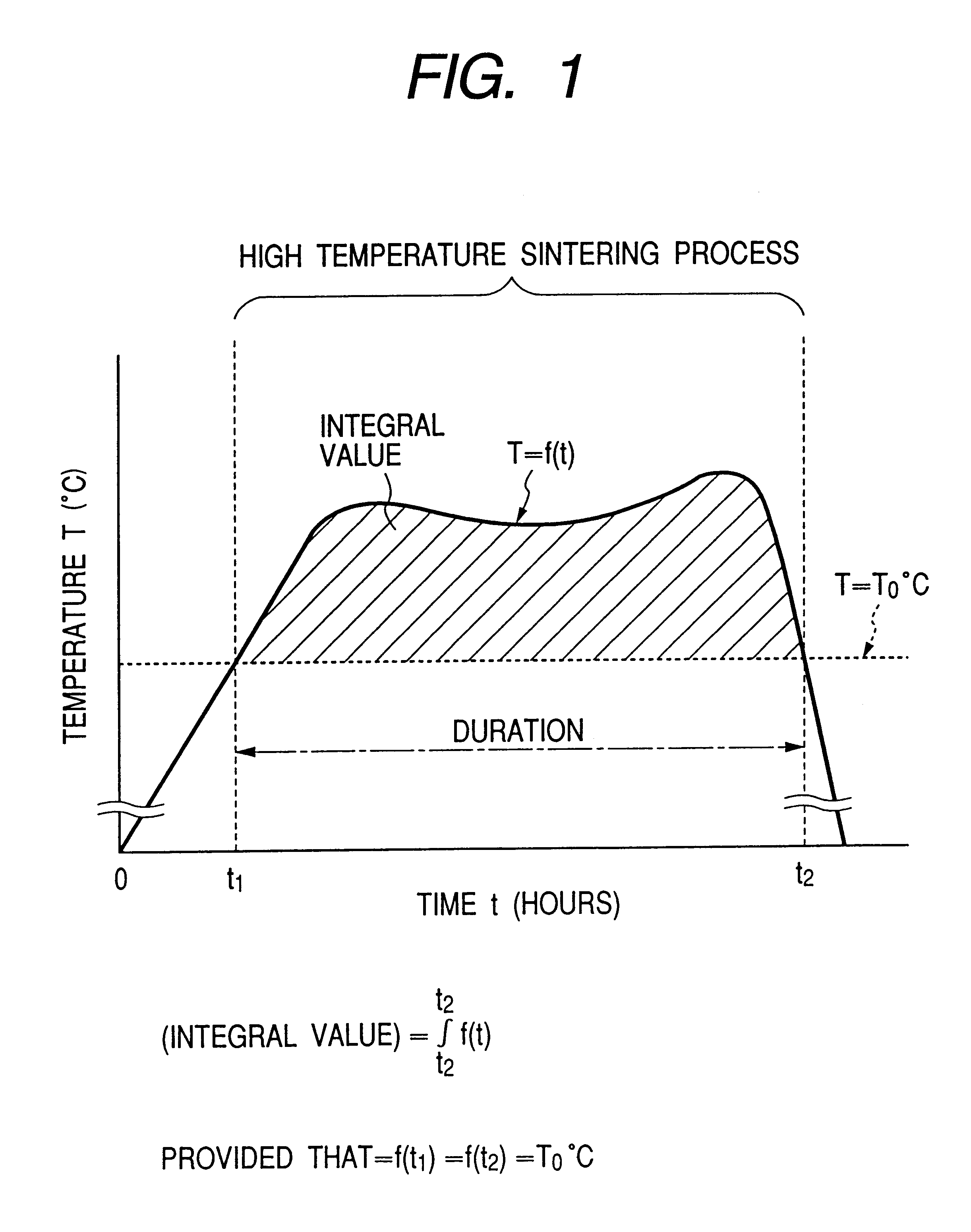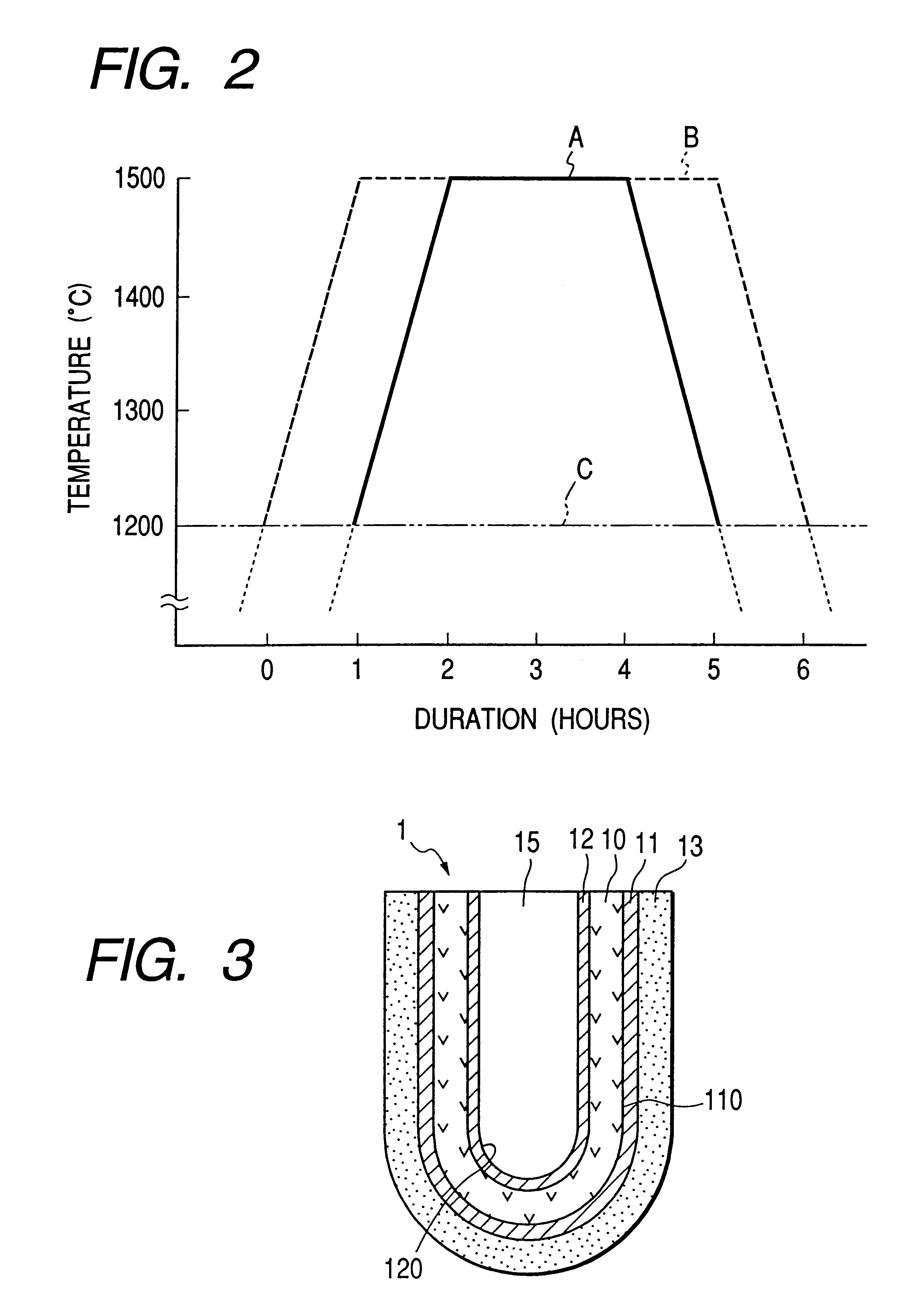Method for manufacturing a gas sensor unit
a sensor unit and gas sensor technology, applied in the field of manufacturing gas sensor units, can solve the problems of solid electrolyte bodies being prone to breakage, prone to breakage, and in the worst case, being broken
- Summary
- Abstract
- Description
- Claims
- Application Information
AI Technical Summary
Problems solved by technology
Method used
Image
Examples
embodiment 1
Reference is now made to FIGS. 1 to 6 to illustrate the method for manufacturing an oxygen sensor unit according to the invention along with its performance being shown in comparison with sensor units for comparison.
FIG. 3 generally shows an oxygen sensor unit 1 which includes a shaped body 10 of a solid electrolyte having an inner space 15 therein. More particularly, the shaped body 15 is in a U shape in section and may be called a cup-shaped body. The sensor unit 1 includes an inner electrode 12 formed on an inner side 120 of the shaped body 10 and exposed to a reference gas, and an outer electrode 11 formed on an outer side 110 of the shaped body 10 and exposed to a gas to be measured. A porous protective layer 13 is provided to cover the outer electrode 11 and the solid electrolyte 10 in the proximity of the outer electrode 11 therewith.
The solid electrolyte body 10 is made of a sintered product of partially stabilized zirconia which is comprised of zirconia and a stabilizer as ...
embodiment 2
In this embodiment, the general procedure of Embodiment 1 for making the sintered product of partially stabilized zirconia is repeated except that slightly different sintering conditions are used as indicated in Tables 1 to 4, thereby obtaining solid electrolyte body samples. These samples are subjected to several tests to compare their performances with one another.
The tests include measurements of a diffraction intensity ratio and a difference in thermal expansion coefficient, .DELTA..alpha., durability tests described hereinafter wherein it is determined whether or not each solid electrolyte body sample is cracked and broken, and a protective layer associated with the body sample is cracked and separated, and measurement of strength of each solid electrolyte body sample.
The arrangement and the manner of fabrication of sample Nos. 1 to 33 are substantially the same as those described in Embodiment 1. The protective layers of these samples are all formed according to a spray coatin...
embodiment 3
Another embodiment of the invention is described with reference to FIGS. 7 and 8. In these figures, there is shown an oxygen sensor unit 19 having a second protective layer 16 formed on the protective layer 13.
More particularly, as shown in FIG. 7, the oxygen sensor unit 19 of this embodiment is provided with the second protective layer 16 on the surface of the protective layer 13 in order to enhance the trapping effect of harmful components contained in a gas to be measured. The second protective layer 16 is made, for example, of alumina with its thickness at 120 .mu.m and porosity at 20 to 50%.
For the formation of the second protective layer 16, a slurry containing alumina is prepared and coated onto the surface of the protective layer 13 by dipping, followed by thermal treatment of the solid electrolyte body in whole. In this manner, the oxygen sensor unit 19 having the second protective layer 1 is formed.
It will be noted that, as is particularly shown in FIG. 8, the shaped solid...
PUM
| Property | Measurement | Unit |
|---|---|---|
| Temperature | aaaaa | aaaaa |
| Time | aaaaa | aaaaa |
| Time | aaaaa | aaaaa |
Abstract
Description
Claims
Application Information
 Login to View More
Login to View More - R&D
- Intellectual Property
- Life Sciences
- Materials
- Tech Scout
- Unparalleled Data Quality
- Higher Quality Content
- 60% Fewer Hallucinations
Browse by: Latest US Patents, China's latest patents, Technical Efficacy Thesaurus, Application Domain, Technology Topic, Popular Technical Reports.
© 2025 PatSnap. All rights reserved.Legal|Privacy policy|Modern Slavery Act Transparency Statement|Sitemap|About US| Contact US: help@patsnap.com



